

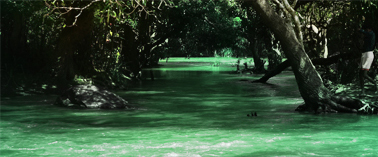
The Kuruva island, 950 acres of ever green forest on the tributaries of east flowing river Kabani, is an ideal picnic spot, far away from the disturbances of city life. The island is uninhabited. Rare species of birds, orchids and herbs are the sovereigns of this supernal kingdom. It is 17 Kms. east of Mananthavady and 40 kms. north west of Sulthan Bathery
Muthanga, Which is 16 kms. east of Sulthan Bathery, is located very near to the Karnadaka border. Wild forests covering an area of 345 sq.kms form the Muthanga wild life sanctuary; the biggest abode of wild animals in Malabar. Elephant, spotted deer, bison, tiger, cheeta, wild bear, etc. are found in this sanctuary. The forest Department has facilities for providing elephant rides to tourists, here
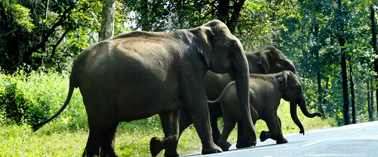
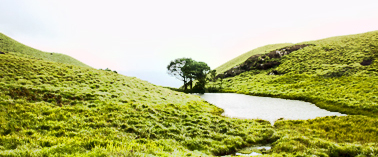
he hills, rocks and valleys which contribute to the very unique character of Wayanad provide a lot for adventure tourism. Trekking to the Chembra peak is a risky mountaineering endeavour. Chembra peak, the highest hill in Wayanad, is near Meppady town. Trekking to the top of this peak takes almost a day. Tourists can also stay one or two days at the top of the peak in temporary camps. District Tourism Promotion Council provides guides, sleeping bags, canvases, huts and trekking implements on hire. The scenic beauty of Wayanad, which is visible from the top of Chembra, is very exhilerating.
Begur(tholpetty) wild life sanctuary ,Wayanad Situated along the northern ridge of Wayanad (bordering Coorg district of Karnataka) Tholpetty is much similar to Muthanga in terms of flora and fauna. The best season to visit both the sanctuaries is between Nov. and May

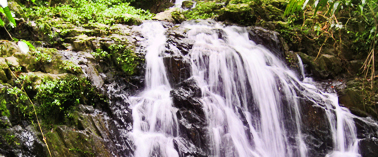
Soochippara waterfalls are really a treasure of nature. You will discover nature at its thundering best. Soochippara is a three tiered powerful waterfall. The cliff face here is ideal for rock-climbing, but for true professionals only.
WayanadAn interesting 2km jungle trek off the main Ooty road, Meenmutty is the largest and most spectacular waterfall in Wayanad. A unique feature is that water drops about 300 metres over three stages.
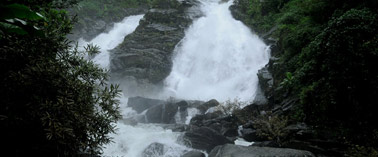

WayanadNellimale is an excellent venue for trekking with lots of stimulating trails. The summit of this hill affords a great view of the cascading Meenmutty falls and the beautiful valley in its foreground.
This is the largest earth dam in India. The topography here is such that many islands will be formed in the upstream of the dam when the dam is full. These islands with the background of the Banasura hill will provide a hypnotising sight to tourists.
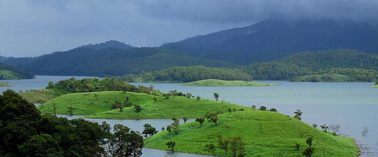
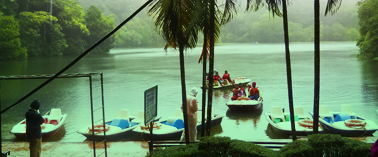
It is a natural fresh water lake, brimmed with ever green mountains. The weather here is salacious; the scenic beauty, hypnotising and the nature, unspoiled. There is an aquarium and a green house here. Boating facilities are also available. Spices and handicraft items are also arranged for sale at Pookot. The lake has an area of 8.5ha. and the maximum water depth is 6.5mtrs.
Pazhassi Tourist Resort at Mananthavady is a good picnic centre in north Wayanad. There is a good aquarium here. Coin-operated toys for children and boating facilities for tourists are available here. Pazhassi Raja, the Lion of Kerala, who organised guerilla type warfare against British East India Company, was cremated here in 1805.
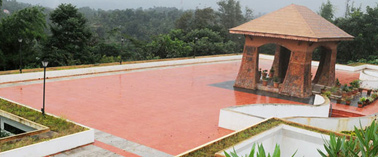

WayanadA skull shaped rock which has an eerie similarity to the face of Phantom. Will be an excellent addition to your travel photos
Excavations at various points around the foot of the Ambukuthi Hill have unearthed a distinctive series of ancient burial vaults commonly called Muniyaras. Remnants of Stone Age tools and pottery found within these cellars are now displayed at the Wayanad Heritage Museum, Ambalavayal.
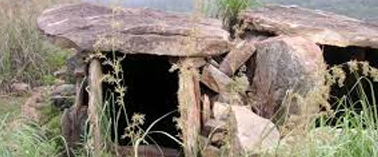
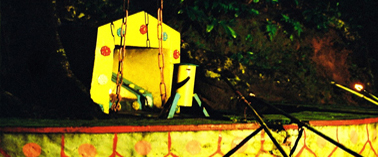
This large Ficus tree, bound by a prominent chain is the source of a dramatic local legend. As the tale goes, an Adivasi youth named Karinthandan was instrumental in guiding a British Engineer through the difficult mountain terrain into Wayanad. Eager to take credit for the discovery the engineer conveniently killed his guide, whose soul, according to the legend, constantly haunted subsequent travellers. It is further believed that a priest chained the troublesome spirit onto this tree.
One of the highest locations in Wayanad, Lakkidi also commands a picturesque scenery. It is about 58 kms. north east of Kozhikode and five kms. south of Vythiri. Lakkidi, the gate way of Wayanad, lies atop Thamarassery, a ghat pass at an elevation of 700 m. above mean sea level.The lofty mountain peaks, the gurging stream, luxuriant vegetation and the bird's eye view of the deep valley on the south, with its winding roads, are breath taking. The 12 kms.long journey from Adivaram to Lakkidi through ghat road with nine hairpin bends amidst thick forests, is a fascinating experience

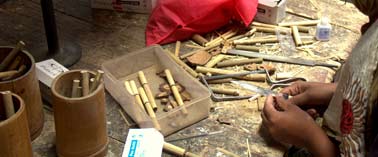
Uravu is a charitable trust that works in the area of indigenous sciences and technology. They run a successful bamboo crafts design and production centre along with a bamboo nursery. Uravu has a whole range of functional and decorative products created out of this wonderful material found so abundantly in Wayanad.
This is the only known temple dedicated to Lava and Kusha, the sons of Lord Rama. Local legends connect this region with many important episodes from the Ramayana. As the favoured shrine of the Pazhassi Raja, this temple has traditionally permitted entry to devotees from all faiths.
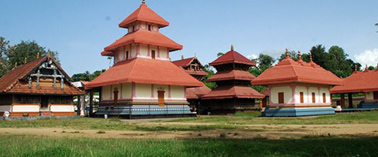

Nestled amidst mountains and forests, the ancient riverside temple of Thirunelli is a fine specimen of classical Kerala temple architecture. Legend has it that this temple was dedicated by the creator, Lord Brahma to propitiate the preserver, Lord Vishnu. The idol is in the form of Chathurbhuja. Often referred to as Dakshina Kasi ( the Kasi of the south), this temple draws pilgrims from all over, primarily for ancestral rites. The two main festivals here are in April and August/September.
This temple is one of the most important amongst a series of ruins spread across the state of Kerala that testify to a period of a strong Jain presence in this region. Believed to have been built in the 13th century, it served as a Hindu shrine, an important for centre for commercial activity and eventually as a battery (ammunition store) for Tipu Sultan's marching armies.The temples at Punchavayal and Puthenangadi are the best known ruins of Jain temples. With their beautifully carved pillars now partly ruined, and the area rather derelict, these sites exude a peculiar air of mystery.
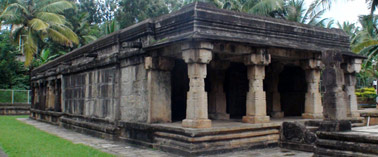

This location of breathtaking beauty is three kilometres from Ambalavayal which is 25 kilometres from Kalpetta. The Edakkal cave in the Ambukuthy mountain, is not a cave in the real sense. As stated in the India Antiquary (Vol.XXX, page - 410) and quoted in the District Gazette, Kozhikode, it is only'a cleft about 96ft. long and 22ft wide in the rock'. It is a fissure made by a corner of rock splitting off from the main body due to some natural causes. The depth of both the cleft and the fissure is 30 ft. What makes it a cave to the ordinary observer is the fact that in the other portion of the large cleft, an enormous rock, weighing several tonnes, has fallen forming a roof over a large part of it. The rock wall contains some interesting carvings, which represent human and animal figures and objects of human use and symbols. These carvings speak of a highly civilized people of pre-historic age and inspires the archaeologists and historians to rewrite the history of Wayanad and Kerala as a whole.